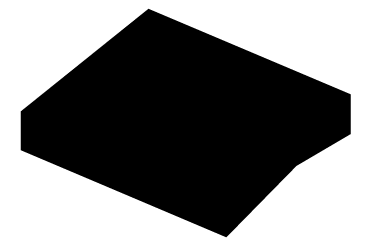Stephen eastaugh: fluffy geography
14.05.25 - 07.06.25
FLUFFY GEOGRAPHY
In Fluffy Geography, Australian artist Stephen Eastaugh offers a tactile, poetic meditation on movement, place, and the fluid geographies shaped by memory and imagination. Developed across Taiwan, Fiji, and Australia, the exhibition brings together 37 small-scale works that blur the boundaries between map and memory, language and landscape. Made from salvaged wood, thread, fabric, and gouged text, each piece functions like a signpost—yet rather than pointing toward fixed destinations, these works invite drift, reflection, and intuitive navigation.
For more than four decades, Eastaugh has embedded travel into the core of his practice. Having worked in over 80 countries—including multiple long residencies in Antarctica—he creates from the perspective of the perennial outsider, one who engages place not as a backdrop, but as a collaborator. Yet Fluffy Geography is not about documenting travel. These are not souvenirs. Instead, they are markers of inner topographies—visual and linguistic fragments shaped by movement and material.
Each work resembles a directional sign, but what it directs is uncertain. Abstracted panoramas sit alongside single-word inscriptions gouged into the wood—symbols and scenes that hover between clarity and suggestion. The stitched elements and worn surfaces hint at landscapes that may be remembered, imagined, or entirely invented. The use of text does not explain but deepens the mystery. Words here feel like found thoughts, partially buried or weathered over time, inviting interpretation rather than instruction.
The title, “Fluffy Geography,” encapsulates the conceptual tension at the heart of the show. “Fluffy” evokes softness, atmosphere, and a sense of ambiguity. “Geography,” by contrast, implies order, measurement, and control. Eastaugh brings these opposing forces into conversation, allowing them to coexist in each piece. What results is a kind of emotional cartography—artworks that don’t chart space so much as they suggest how it might feel to move through it.
Rather than offering a linear narrative, Fluffy Geography unfolds as a dispersed landscape of thought. Each work is a waypoint, not in the navigational sense, but as a moment of pause—an invitation to stop, consider, and reorient. These are artworks made to be read slowly, felt physically, and understood over time.
Stephen Eastaugh’s ongoing commitment to working with found materials—wood scarred with age, fabric frayed by use, thread as both line and suture—adds to the sense of lived history embedded in the work. In his hands, the act of stitching becomes an act of mapping; the gouging of words, a form of excavation. Together, these gestures form a language that resists certainty and celebrates ambiguity.
Fluffy Geography offers no destination and no clear route. Instead, it proposes a different kind of journey—one shaped by intuition, memory, and openness to the unknown. Eastaugh reminds us that place is never just where we stand, but how we feel, remember, and imagine. In this world of soft signs and shifting symbols, the viewer is invited not to arrive, but simply to wander.
Q&A
BP: What conditions or contexts gave rise to the Beautiful Borders series?
SE: This series was developed during my second residency in Taipei, at the Treasure Hill Artist Village—a compact, characterful space nestled within a layered urban ecosystem. I spent six intensive weeks there: exhibiting, walking mountain trails, reflecting on Taiwan’s precarious geopolitical position, and engaging with the local art community. The looming, unresolved threat from mainland China lingered in the background, sharpening my awareness of visible and invisible divisions. From that atmosphere emerged this suite of 16 mixed-media works.
BP: How does materiality function in this body of work?
SE: Each work—20 by 35 centimetres—combines acrylic, cotton thread, fake grass, metallic paint, watercolour, felt, and Belgian linen. I deliberately chose a tactile, sometimes contradictory palette. Softness alongside synthetic, stitched lines crossing open fields. These materials behave like borders themselves: shifting between containment and permeability, comfort and friction.
BP: Borders are central to the series—what draws you to them, conceptually?
SE: Borders occupy a liminal terrain that is both real and symbolic. I’m drawn to their contradictions—how they can simultaneously separate and connect. They operate like emotional seismographs: sites of joy and sorrow, confrontation and reconciliation. I see them as see-saws—tipping between states, never still. They’re where abstraction and representation meet, where politics collides with personal experience.
BP: How do you articulate the shifting nature of frontiers through your imagery?
SE: I stitched barbed, red thread and scattered grid-like formations across ambiguous islands—gestures that suggest mapping, but resist legibility. These visual interventions aren’t literal—they’re speculative. They mirror the unstable, often contradictory character of borders: places where strangers encounter one another, for better or worse. The ambiguity is intentional.
BP: Do you imagine a future for borders beyond their current function?
SE: That’s the hope buried in the title. Borders can be violent, bureaucratic, cold—but they can also transform. Frontiers become walls, then trenches, then maybe bridges. Landscape, of course, doesn’t care about our divisions. The idea of beautiful borders isn’t naïve optimism—it’s a provocation. A hope that these charged zones can evolve into places of genuine, humane encounter.














